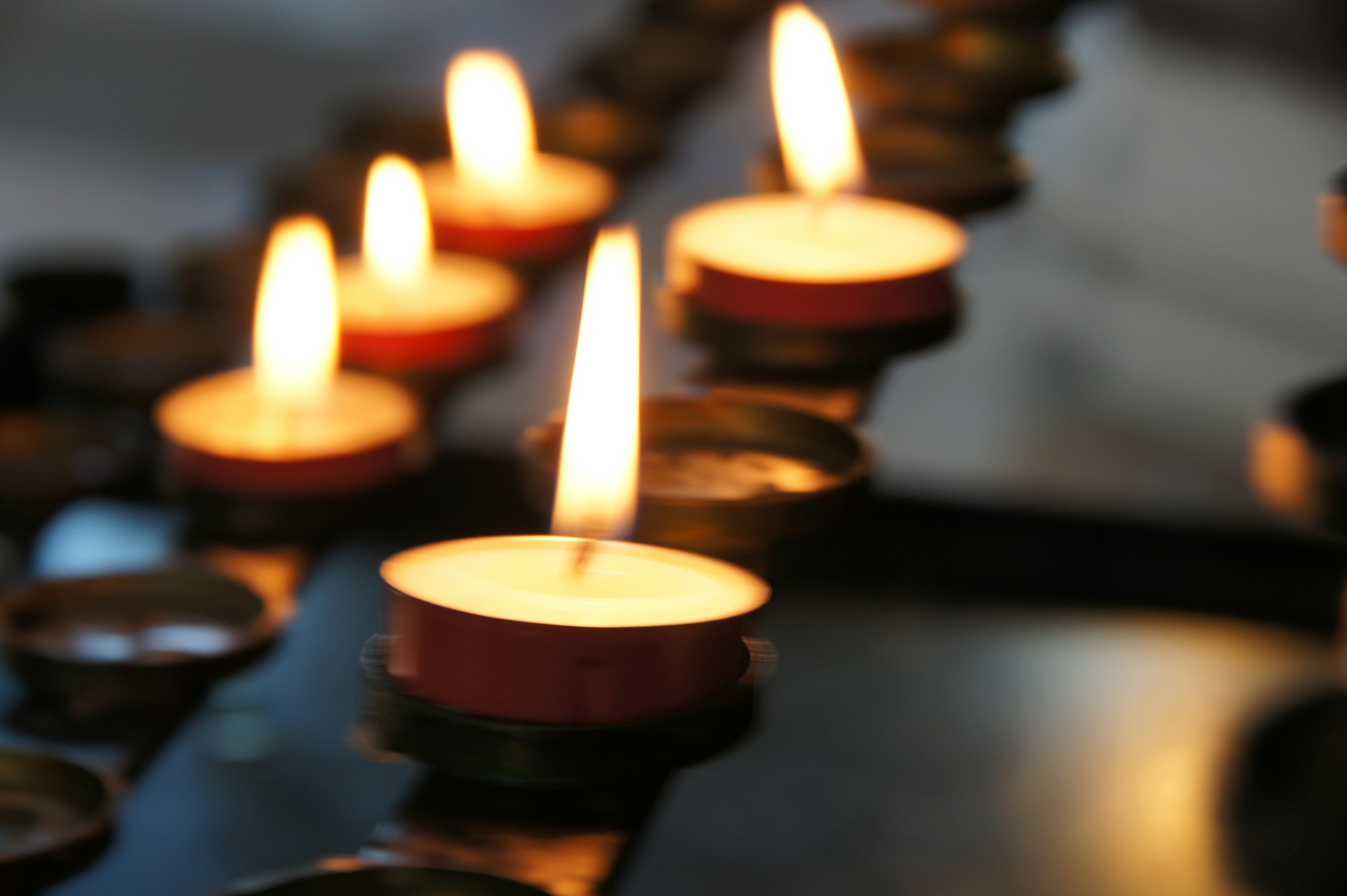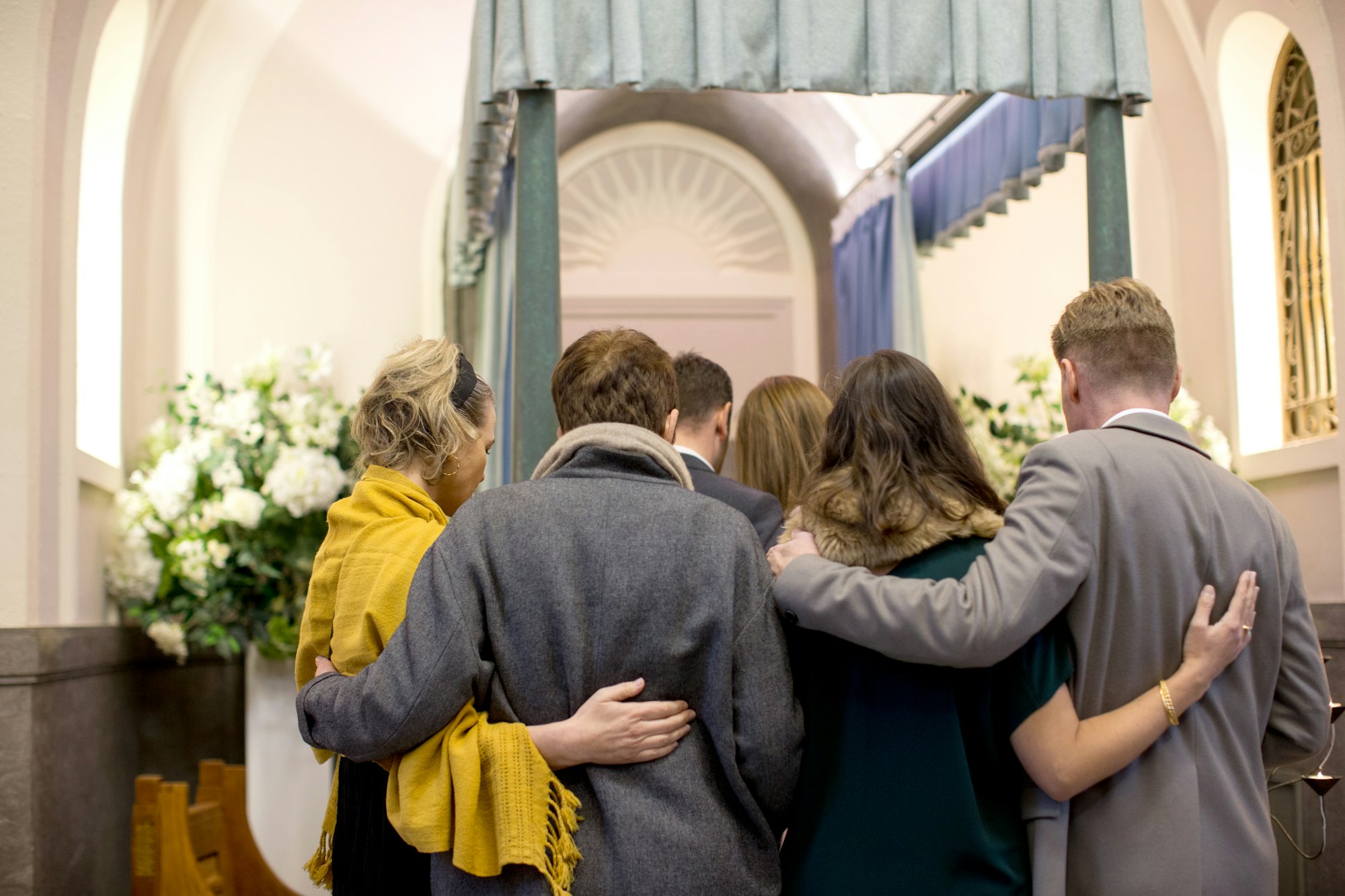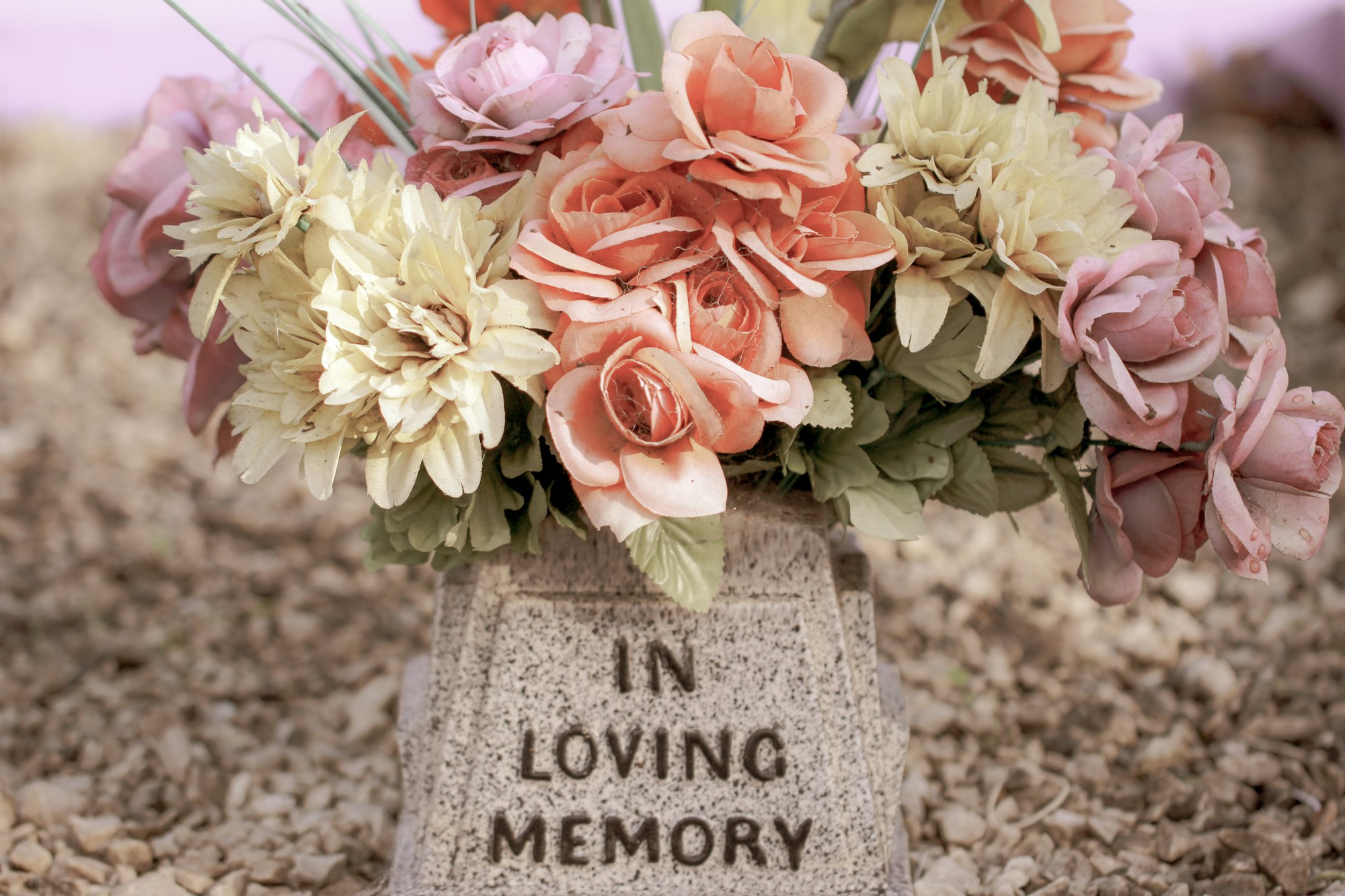Understanding Grief Timelines: Why Your Journey Doesn't Follow a Schedule
Feeling pressure about how long grief lasts? Learn why there's no timeline for healing after loss and how to honor your unique grief journey without judgment.

Key Takeaways
- Grief has no expiration date or fixed timeline, despite what society often implies through well-meaning but misguided expectations
- The popular "stages of grief" model was never intended as a linear process or timeline that everyone must follow in order
- Research shows that grief duration varies dramatically based on relationship closeness, circumstances of death, personal history, support systems, and cultural context
- Experiencing grief months or even years after loss is completely normal and doesn't indicate you're "grieving wrong" or need to hurry toward healing
- Making memorial decisions should happen on your timeline, not according to external pressure or arbitrary deadlines
Reflections on love, loss, and the ways we carry them.
If you’re reading this because you’re worried that your grief is taking “too long,” let me tell you something I wish more people heard early on: You are not late. You are not broken. You are grieving in the exact rhythm your love requires.
For more than twenty years of walking alongside bereaved families, I’ve seen how cultural timelines such as three-day bereavement leaves, well-meaning comments about “moving on,” even the misunderstood five stages can create pressure that has nothing to do with real healing. Grief is not a project. It doesn’t unfold in neat chapters. It reshapes us slowly, unevenly, tenderly, in its own time.
One of my clients, Anna, lost her husband after 38 years together. For months she apologized to me for still crying “this much.” She whispered, “Shouldn’t I be better by now?” When she finally allowed herself permission to grieve without a deadline, something softened. She later told me that choosing cremation solidification felt like lifting a weight she didn’t know she was carrying. Holding one of her husband’s stones, she said, “For the first time, I’m not racing against a clock. I can decide what to do with him when I’m ready.”
This is what families often need most: reassurance that there is no finish line, no expiration date for sorrow, no single “right” pace.
Grief evolves. It integrates. It finds quieter corners. But it doesn’t disappear—and that’s not a failure. That is love, reshaping itself into something you carry forward.
Give yourself permission to heal in your own time. There is no timeline—only your journey.
Cathy Sanchez Babao
Parting Stone Grief Coach
If you're reading this late at night, searching for reassurance that you're not broken because you're still grieving months or years after your loss, take a breath. What you're experiencing is normal. The pressure you feel to "be over it by now" says more about our culture's discomfort with grief than it does about your healing process.
You might have heard well-meaning comments like "Isn't it time to move forward?" or felt the subtle implication that your grief should have wrapped up by now. Perhaps you've even judged yourself, wondering why you're not further along some imagined grief roadmap. The truth that rarely gets said out loud is this: grief doesn't follow a schedule, and your timeline is exactly right for you.
Understanding why we expect grief to have a timeline, and why that expectation is fundamentally flawed, can lift an enormous burden. You're not failing at grief. You're navigating one of life's most profound experiences in your own way, at your own pace.

A New Way to Hold Close What Matters Most
We transform cremated remains into beautiful, touchable stones that bring comfort when you need it. Something you can hold, share, and keep close.
Why We Expect Grief to Have a Timeline
Our culture has an uncomfortable relationship with grief. We've developed elaborate systems to contain it, schedule it, and, if possible, resolve it quickly so everyone can return to normal. This impulse comes from several deep cultural currents that shape how we think about loss.
The American workplace typically offers three to five days of bereavement leave. Health insurance companies often limit grief counseling to a set number of sessions. Even our language betrays this expectation with phrases like "getting over it" and "moving forward," as if grief were an obstacle to overcome rather than an ongoing relationship with loss.
The most significant contributor to timeline expectations is the widespread misunderstanding of psychiatrist Elisabeth Kübler-Ross's famous five stages of grief. In her 1969 book "On Death and Dying," Kübler-Ross described stages she observed in terminally ill patients facing their own deaths, not in bereaved people mourning someone else's death (Maciejewski et al., 2007). The stages (denial, anger, bargaining, depression, acceptance) were never intended as a prescriptive roadmap or sequential process. Yet they became embedded in popular culture as exactly that: a checklist to complete, with acceptance as the finish line.
This misinterpretation created what grief researcher Kenneth Doka calls "disenfranchised grief," where people feel their grief is invalidated because it doesn't match expected timelines or expressions (Doka, 2002). When your experience doesn't align with the supposed stages, you might wonder if you're grieving incorrectly.
Our broader culture also struggles with uncertainty and open-ended processes. We like beginnings, middles, and endings. We want to know when things will get better, when the pain will stop, when life will return to something resembling normal. Grief, in its honest form, offers no such reassurance. It transforms but doesn't disappear. It integrates but doesn't resolve. This makes us collectively uncomfortable.
Mary from Prescott, Arizona 🖤, who lost her husband in September 2021, discovered how grief continues to evolve rather than end: "Parting Stones allow us to remember our loved one daily as we live our ordinary lives. I carry one in my pocket, there's one on the dashboard of the truck, and always one in my travel luggage. As a widow, I found Parting Stones to be a valuable and comforting way to grieve, to remember shared experiences and to invite my late husband along on new adventures."

What Research Actually Shows About Grief Duration
When researchers study grief without the constraints of cultural expectations, they discover something both validating and complex: there is no standard grief timeline. The question "how long does grief last?" has no single answer because grief isn't a condition that ends, it's an adaptive process that evolves.
A groundbreaking study published in the Journal of the American Medical Association followed bereaved spouses for 18 months after loss. Researchers found that while acute symptoms of grief typically decreased over time, there was enormous individual variation. Some participants showed significant adaptation within months; others were still experiencing intense grief reactions at the study's end (Bonanno et al., 2002). Neither pattern indicated pathology, both were normal grief responses.
The concept of "continuing bonds," developed by grief researchers Dennis Klass, Phyllis Silverman, and Steven Nickman, fundamentally challenged the idea that healthy grief means letting go and moving forward. Their research demonstrated that bereaved individuals who maintained ongoing connections with deceased loved ones, rather than severing those bonds, often showed better psychological adjustment (Klass et al., 1996). This wasn't denial or avoidance, it was a healthy integration of loss into ongoing life.
Lynn from Houston, Texas 🖤, whose husband died after 53 years together, describes this ongoing connection: "I have been able to quietly and privately place stones in places that were meaningful to us through our 53 years together, share them with family and the closest of friends, and keep a few close to favorite photographs. They are a beautiful and comforting presence."
More recent research distinguishes between acute grief and integrated grief. Acute grief involves the intense, disruptive symptoms that typically peak in the first six months: profound sadness, difficulty accepting the death, preoccupation with the deceased, and disrupted daily functioning. Integrated grief, which most people gradually develop, involves accepting the reality of the loss while maintaining a connection to the deceased person (Shear et al., 2011).
Important to note: integrated grief doesn't mean the absence of grief. You can have fully integrated a loss and still experience waves of intense grief during anniversaries, holidays, or unexpected moments. A song on the radio five years later can still bring tears. This isn't regression, it's the nature of love persisting beyond death.
The Center for Complicated Grief at Columbia University found that approximately 70% of bereaved individuals naturally develop integrated grief within 6 to 18 months, but the remaining 30% continue experiencing intense acute grief symptoms beyond that timeframe (Shear, 2015). Both patterns can be entirely normal depending on circumstances. The idea that everyone should "be better" by a certain point simply doesn't match observed reality.
Research also reveals that relationship closeness matters more than elapsed time. Someone grieving a spouse of 40 years will typically have a different timeline than someone grieving a distant acquaintance. The death of a child often produces the longest-lasting acute grief, regardless of the child's age (Li et al., 2003). Sudden, traumatic deaths generally require more processing time than anticipated deaths.

Factors That Influence Your Personal Grief Timeline
Your grief experience is shaped by a complex interplay of factors that make comparison with others meaningless. Understanding these influences can help you stop judging your timeline against others' and instead recognize your grief as a response to your specific circumstances.
The Nature of Your Relationship
The depth, complexity, and duration of your relationship with the deceased person fundamentally shapes your grief experience. A spouse of many decades represents not just a person but an entire life built together, shared memories, future plans, and daily routines. A parent holds your personal history. A child represents hopes and dreams. A sibling is often your longest relationship. Each loss has distinct qualities that influence how grief unfolds.
Complicated relationships can actually extend grief timelines, not because you loved less, but because you're processing multiple layers of feeling: grief for what was, grief for what could have been, and sometimes relief mixed with guilt. These complex emotions require more time to integrate.
Circumstances Surrounding the Death
How someone died significantly impacts the grief process. Sudden, unexpected deaths often require extensive processing time because your mind needs to catch up with an abrupt reality shift. There was no preparation, no goodbye, no closure to seek (though closure itself is a problematic concept we'll address later).
Traumatic deaths, particularly those involving violence, accidents, or suicide, layer trauma responses onto grief responses. You're processing not just the loss but potentially intrusive memories, hypervigilance, and questions about suffering. These deaths typically require professional support and extended timelines.
Deaths following long illnesses carry their own complexities. While you may have had time to prepare, witnessing suffering and providing care can be exhausting and traumatic. Some people experience anticipatory grief that begins before death, but contrary to common assumption, this doesn't necessarily shorten grief after death.

Your Personal History and Coping Resources
Your previous experiences with loss, your mental health history, your natural coping style, and your internal resources all influence your grief timeline. If this is your first major loss, you're learning to navigate grief for the first time. If you've experienced multiple losses, you might process this one differently, for better or worse.
Pre-existing depression, anxiety, or trauma can complicate grief, though this doesn't mean your grief is pathological. It simply means you're working with additional layers that require acknowledgment and potentially professional support.
Some people naturally process emotions internally and slowly. Others express feelings readily but still need extended time for the grief to integrate. Neither approach is better, they're just different styles with different timelines.
Jean from Ashburn, Virginia 🖤, whose parents passed in 2021, took several years before initiating her memorial process: "My parents passed away in 2021 so I've just initiated the Parting Stone process in 2025. I feel it will be a much better tribute to them to incorporate the stones in the garden or anywhere else that was meaningful to them. I didn't live in the same country where they passed so this is a way to keep them close."
Your Cultural and Spiritual Context
Cultural background shapes everything from how openly you express grief to what rituals feel meaningful to when you're expected to "be done" grieving. Some cultures maintain active relationships with ancestors and deceased loved ones as an ongoing practice. Others emphasize moving forward. Neither is right or wrong, they're different frameworks for understanding death and memory.
Religious and spiritual beliefs also deeply influence the grief experience. These beliefs might offer comfort and meaning, or they might create additional questions and struggles. Your spiritual community's support can be invaluable, or their expectations might feel constraining.
Quality and Availability of Support
The support you receive significantly impacts your grief journey's course. This includes practical support (help with daily tasks during acute grief), emotional support (people who listen without judging or rushing you), and professional support (grief counselors who normalize your experience).
Lack of support doesn't prevent grief from integrating, but it can extend timelines and increase suffering. Conversely, having people who understand that grief has no schedule can provide enormous relief and facilitate natural healing.
Some people find tremendous support in grief groups where everyone understands that two years, five years, even ten years later, you can still have hard days. These spaces normalize ongoing grief in ways that general social circles often don't.
Life Demands and Stressors
You don't get to press pause on life to grieve. Work continues, bills need paying, other family members need care. These ongoing demands can both help (providing structure and purpose) and hinder (preventing time and space to process) grief.
Additional stressors, financial strain, relationship difficulties, health problems, compound grief and often extend timelines. You're managing multiple challenges simultaneously, each requiring emotional and practical resources.

Common Timeline Myths vs. Reality
Our culture has developed several pervasive myths about grief timelines that cause unnecessary suffering. Let's examine these myths alongside what bereaved people actually experience:
Myth: The "One Year" Rule
Many people believe that grief should be largely resolved by the first anniversary of the death. This myth probably stems from the practice of marking the one-year anniversary, after which some assume grieving should be complete.
Reality: The first year involves experiencing every "first" without your loved one: first birthday, first holidays, first spring, first anniversary of the death itself. Rather than ending grief, these firsts often intensify it. Many people report that the second year feels harder because the shock has worn off and the permanence of loss fully sinks in. Grief often continues evolving for years, not concluding at some arbitrary endpoint.
Myth: Grief Follows Predictable Stages in Order
The misunderstood Kübler-Ross stages have convinced many that grief progresses linearly: denial, then anger, then bargaining, then depression, then acceptance. Completion of these stages supposedly means grief is finished.
Reality: Grief is not linear. You might feel acceptance one day and denial the next. Anger might arrive years later. You could experience multiple emotions simultaneously. Most people describe grief as coming in waves, intense periods followed by calmer times, then intensity again. This isn't regression, it's the natural rhythm of grief. (Stroebe & Schut, 1999) described this as the "dual process model," where bereaved people oscillate between loss-oriented coping and restoration-oriented coping.
Valencia from Clinton, Michigan 🖤 describes this ongoing experience: "I carry one of his rocks with me in my purse. I slept with a few for a while too. I love them! Rocks are neither created nor destroyed, but re-distributed and transformed from one rock type to another. This fun fact resonated with me about life and death. He's still with me, just in a different form."
Myth: Getting Back to Normal is the Goal
This myth suggests that healthy grieving means returning to your pre-loss self and resuming your previous life.
Reality: Loss fundamentally changes you. You don't return to who you were before; you become someone new who has integrated this loss. Your "normal" is different now. Trying to recapture your old normal sets up an impossible goal that creates additional suffering. The actual work of grief involves creating a new normal that includes the absence of your loved one while maintaining connection to their memory.

Myth: Strong Grief Means Strong Love; Quick Adaptation Means Less Love
Some people judge themselves or others based on how long or intensely they grieve, assuming that more visible, longer grief indicates deeper love.
Reality: Grief expression varies enormously based on personality, culture, coping style, and circumstances. Some people who loved deeply adapt relatively quickly because they have strong support systems, good coping skills, or temperaments that facilitate adaptation. Others who loved equally deeply require much longer timelines. Neither pattern indicates more or less love; they indicate different people responding differently to loss.
Myth: You Should Be "Over It" Once You Start Enjoying Life Again
This insidious myth makes people feel guilty for laughing, having fun, or experiencing joy while still grieving.
Reality: Laughter and tears can coexist. You might have a wonderful day and still deeply miss your loved one. Enjoying life again doesn't dishonor the deceased or mean your grief has ended. It means you're integrating loss into ongoing life, which is exactly what healthy grief adaptation looks like. Many bereaved people find that including their loved one's memory in joyful moments (taking their solidified remains to meaningful places, imagining what they'd say, honoring them through celebration) feels right.
Janet from Troy, Michigan 🖤, whose husband passed in 2014, shares: "My husband and I traveled extensively until he passed suddenly. Now my daughter and I take one of his stones to every country we visit and leave it, so we are able to feel the closeness of him still enjoying his love of travel with us. I am actually surprised by the closeness we feel to him as we look for the most meaningful spot to leave his stone on every trip."

When Grief Becomes Complicated
While grief has no timeline, some patterns suggest you might benefit from professional support. This doesn't mean you're grieving wrong; it means additional help could ease your suffering and facilitate your natural healing process.
Mental health professionals distinguish between normal grief (however long it lasts) and prolonged grief disorder, which involves persistent, intense grief that significantly impairs functioning more than 12 months after loss (6 months for children). Key differences include:
Normal Grief (No Timeline Limit):
- Waves of intense grief interspersed with periods of relative calm
- Ability to experience positive emotions, even if briefly
- Gradual acceptance of loss's reality, even if painful
- Maintained relationships and life engagement, even if different than before
- Sense that grief is evolving, even if slowly
Prolonged Grief Disorder (May Benefit from Treatment):
- Persistent, intense longing or preoccupation with the deceased that prevents engagement with life
- Difficulty accepting the death's reality after extended time
- Avoidance of all reminders or, conversely, inability to engage with anything except reminders
- Feeling that life is meaningless or empty
- Significant impairment in work, relationships, or self-care for extended periods
Important distinction: You can experience all these feelings temporarily during normal grief. The difference is persistence and intensity over time, typically at least 12 months, combined with significant life impairment.
Some specific circumstances increase the risk of complicated grief:
- Death by suicide, homicide, or accident
- Death of a child
- Multiple recent losses
- Pre-existing mental health conditions
- Lack of social support
- Ambiguous loss (missing persons, estrangement)
If any of these apply, consider connecting with a grief therapist, not because your grief is pathological, but because these circumstances often benefit from professional support. Organizations like the National Alliance for Grieving Children, What's Your Grief, and the Association for Death Education and Counseling offer resources for finding qualified grief support.
Seeking help doesn't mean you're weak or broken. It means you're taking care of yourself during one of life's most challenging experiences. Many people find that even a few sessions with a grief-informed therapist help them understand their experience and feel less alone.

Honoring Your Own Timeline
Grief demands that you become your own advocate, setting boundaries with others' expectations and, perhaps more difficultly, with your own internalized judgment. Here are some ways to honor your unique grief timeline:
Give Yourself Permission
The single most important thing you can do is give yourself explicit permission to grieve for as long as you need, in whatever way feels right for you. This might mean literally saying to yourself: "My grief timeline is my own. I'm not grieving wrong. I'm grieving exactly as I need to."
When you catch yourself thinking "I should be over this by now," gently challenge that thought. Says who? Based on what? Your grief is responding to your unique loss, history, circumstances, and needs. There's no "should" that applies.
Set Boundaries with Others
Well-meaning people will sometimes say unhelpful things about your grief timeline. You have every right to set boundaries:
- "I appreciate your concern, but I'm grieving on my own timeline."
- "Grief doesn't follow a schedule. I'm doing what I need to do."
- "I'm not comfortable discussing where I 'should' be in my grief."
You don't owe anyone explanations or justifications for your grief experience. If people in your life can't respect your timeline, consider whether you need distance from those relationships during this vulnerable time.
Find Your People
Seek out people who understand that grief has no expiration date. This might be a grief support group, a therapist, online communities, or friends who've experienced significant loss themselves. Being around people who normalize ongoing grief provides enormous relief and validation.
AmberElizabeth from Santa Fe, New Mexico, who lost both parents, describes navigating her first holidays without them: "Loss is a wave we will always ride in their absence and our grief is how we ride it. Our parents didn't leave any instructions for their ashes; they told my brother and I they trusted us. With this trust, we took part of their ashes to their sacred places and had stones made that we both place in our sacred places. This is incredible: to be able to honor the power and magic of place, love, connection for both those who flew and for those of us who remain behind."
Practice Self-Compassion
Treat yourself with the same kindness you'd offer a dear friend in your situation. This means:
- Acknowledging that what you're going through is difficult
- Recognizing that you're doing the best you can
- Allowing yourself to have hard days without judgment
- Celebrating small moments of joy or peace without guilt
Kristin Neff's research on self-compassion shows it's particularly helpful during grief, reducing suffering without denying pain (Neff & Germer, 2013).
Honor Grief's Rhythm
Pay attention to your natural grief rhythm. You might notice that certain times of day are harder. Certain seasons might intensify grief. Anniversaries and holidays often bring waves of renewed grief, even years later. This isn't backsliding; it's grief's natural pattern. Planning for these times (scheduling extra support, giving yourself permission to decline events, or creating meaningful rituals) honors your reality.
Reject Comparison
Your grief is yours alone. Someone who lost a similar loved one might grieve completely differently, and that's okay. Don't judge your inside experience by others' outside appearance. You have no idea what anyone else is really experiencing, and they have no idea what you're experiencing unless you tell them.

Making Decisions Without Timeline Pressure
One area where timeline pressure particularly impacts bereaved people is memorial and practical decisions. You might feel rushed to "do something" with cremated remains, choose a memorial, or make decisions you're not emotionally ready for.
Here's what often goes unsaid: there's no deadline for these decisions. Your loved one's remains can stay exactly where they are until you're ready to consider options. This might be months, years, or longer, and that's completely acceptable.
Many people live with stored cremated remains for years, waiting until they know what feels right. This waiting period isn't avoidance; it's often a necessary part of the grief process. You need time to understand what would be meaningful for you, and that understanding often only comes with time.
When you do feel ready to consider options, the right choice is whatever resonates with you, not what you think you "should" do or what others expect. Some families find that transforming cremated remains into solidified remains provides a complete alternative to stored ashes. The process takes approximately 8 to 10 weeks and creates 40 to 80+ smooth, touchable stones that you can keep, share with family members, take to meaningful places, or display in ways that feel right for you.
Sarah from Moriah, New York 🖤, who lost her husband in March 2022, shares: "I was having difficulty deciding on an urn. Parting stones also made it easier to share my husband's remains with our large, close-knit family. He was an avid rock collector as well, so everything about this made sense and has given me peace."
The service costs $2,495 for human remains, and what distinguishes this option is that it removes the pressure to decide what to do with cremated remains. There's no urgency, no timeline, no sense that you need to scatter or do something by a certain point. The stones can remain with you indefinitely, travel with you, or be shared across your family in whatever timeframe and manner feels right.
For families wondering when the "right time" is to make memorial decisions, the answer is simply: when it feels right to you. That might be immediately, or it might be years later. Neither is wrong. Your readiness cannot be rushed, and memorial options that honor this reality serve you better than those that impose timelines.

Conclusion
If you're reading this searching for permission to grieve on your own timeline, here it is: Your grief is exactly what it should be, for exactly as long as it needs to be. The pressure to hurry through grief, to complete it by some arbitrary deadline, to move past loss rather than integrate it into your ongoing life, all of that pressure comes from cultural discomfort, not from any truth about how grief actually works.
You are not broken. You are not grieving wrong. You are not taking too long. You're navigating one of life's most profound challenges in your own way, shaped by your unique relationship, circumstances, history, and needs. The person who died mattered to you. Of course grief takes time. Of course it doesn't follow a schedule. Of course it continues to surface even years later.
Give yourself the grace to grieve authentically, the courage to set boundaries with others' expectations, and the wisdom to trust your own timing. Your grief journey is yours alone, and your timeline is exactly right for you.
Frequently Asked Questions
How long does grief typically last after losing someone?
Grief doesn't have a typical duration because each person's experience is unique. While acute, intense symptoms often peak in the first 6 to 18 months, grief continues evolving for years or even a lifetime. Research shows that most people develop integrated grief where they've accepted the loss while maintaining connection to the deceased, but this integration doesn't mean grief ends. Waves of grief can return during anniversaries, holidays, or unexpected moments indefinitely. There's no timeline by which you "should" be done grieving.
Is it normal to still grieve years after a loss?
Yes, absolutely. Continuing to experience grief years after loss is completely normal and doesn't indicate you're grieving incorrectly. Many bereaved people report that certain aspects of grief, particularly missing their loved one and wishing they were still alive, never fully go away. What typically changes over time is your relationship with grief: it becomes less constantly present and acute, integrating into your life rather than overwhelming it. Having difficult days or moments of intense grief years later doesn't represent regression or failure in your healing process.
What if I'm not following the five stages of grief in order?
The five stages of grief (denial, anger, bargaining, depression, acceptance) were never intended as a linear process that everyone follows. Psychiatrist Elisabeth Kübler-Ross developed these stages by observing terminally ill patients facing their own deaths, not bereaved people mourning someone else's death. Grief is not linear, you might experience multiple stages simultaneously, skip some entirely, or revisit stages you thought you'd moved past. There's no correct order, and you don't need to complete all stages for your grief to be valid or healthy.
How do I know if my grief has become complicated or prolonged?
Prolonged grief disorder involves persistent, intense grief that significantly impairs your functioning more than 12 months after loss (6 months for children). Key signs include inability to accept the death's reality, persistent intense longing that prevents life engagement, feeling life is meaningless, and significant impairment in work, relationships, or self-care. Normal grief, regardless of duration, typically includes waves of intensity followed by calmer periods, ability to experience positive emotions even briefly, and a sense that grief is gradually integrating into your life. If you're concerned, consulting with a grief therapist can help you understand your experience and access support.
When is the right time to make memorial decisions?
The right time to make memorial decisions is when you feel emotionally ready, which might be immediately, months, or years after loss. There's no deadline or timeline pressure for decisions about cremated remains, memorial services, or other ways of honoring your loved one. Many families wait years before making these decisions, allowing time to understand what feels truly meaningful rather than rushing into choices they're not ready for. Trust your own readiness and resist any external pressure to decide before you feel prepared.
Can I experience joy or happiness while still grieving?
Yes, joy and grief can absolutely coexist. Experiencing happy moments, laughter, or pleasure in life doesn't mean your grief has ended or that you've dishonored your loved one's memory. It means you're integrating loss into ongoing life, which is exactly what healthy grief adaptation looks like. Many bereaved people find that including their loved one in joyful moments (through memory, ritual, or bringing symbolic representations to meaningful places) feels right and honors both their loss and their continuing life.
References
Bonanno, G. A., Wortman, C. B., Lehman, D. R., Tweed, R. G., Haring, M., Sonnega, J., Carr, D., & Nesse, R. M. (2002). Resilience to loss and chronic grief: A prospective study from preloss to 18-months postloss. Journal of Personality and Social Psychology, 83(5), 1150-1164. https://doi.org/10.1037/0022-3514.83.5.1150
Doka, K. J. (2002). Disenfranchised grief: New directions, challenges, and strategies for practice. Research Press.
Klass, D., Silverman, P. R., & Nickman, S. L. (Eds.). (1996). Continuing bonds: New understandings of grief. Taylor & Francis.
Li, J., Precht, D. H., Mortensen, P. B., & Olsen, J. (2003). Mortality in parents after death of a child in Denmark: A nationwide follow-up study. The Lancet, 361(9355), 363-367. https://doi.org/10.1016/S0140-6736(03)12387-2
Maciejewski, P. K., Zhang, B., Block, S. D., & Prigerson, H. G. (2007). An empirical examination of the stage theory of grief. JAMA, 297(7), 716-723. https://doi.org/10.1001/jama.297.7.716
Neff, K. D., & Germer, C. K. (2013). A pilot study and randomized controlled trial of the mindful self-compassion program. Journal of Clinical Psychology, 69(1), 28-44. https://doi.org/10.1002/jclp.21923
Shear, M. K. (2015). Complicated grief. New England Journal of Medicine, 372(2), 153-160. https://doi.org/10.1056/NEJMcp1315618
Shear, M. K., Simon, N., Wall, M., Zisook, S., Neimeyer, R., Duan, N., Reynolds, C., Lebowitz, B., Sung, S., Ghesquiere, A., Gorscak, B., Clayton, P., Ito, M., Nakajima, S., Konishi, T., Melhem, N., Meert, K., Schiff, M., O'Connor, M. F., ... Keshaviah, A. (2011). Complicated grief and related bereavement issues for DSM-5. Depression and Anxiety, 28(2), 103-117. https://doi.org/10.1002/da.20780
Stroebe, M., & Schut, H. (1999). The dual process model of coping with bereavement: Rationale and description. Death Studies, 23(3), 197-224. https://doi.org/10.1080/074811899201046











